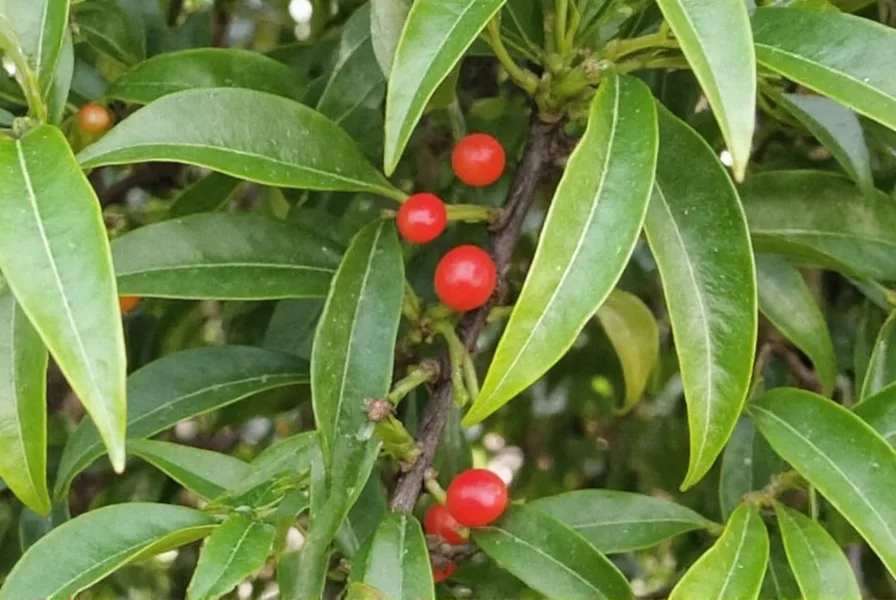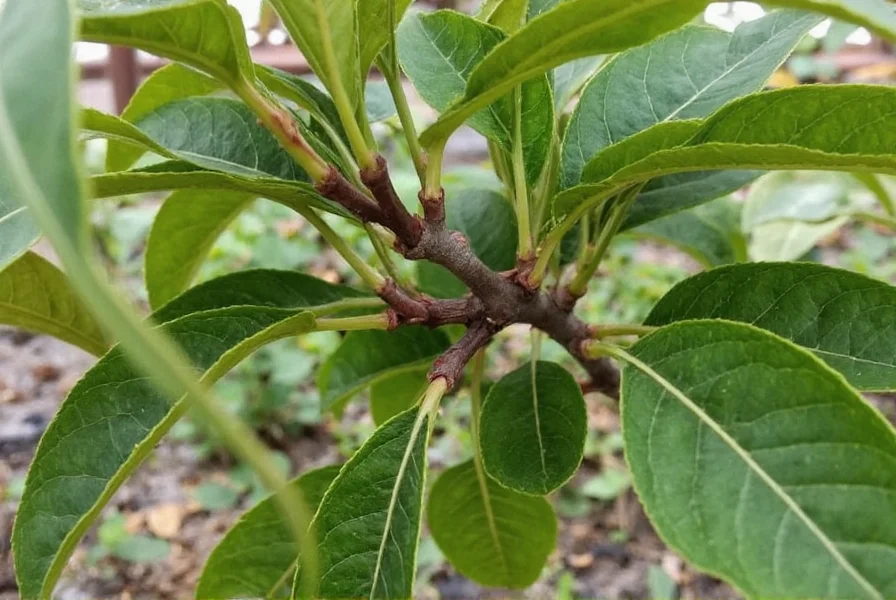When searching for clove garden photos, you're likely seeking visual references of the Syzygium aromaticum tree—the source of the popular spice—in cultivated settings. Unlike common misconceptions, clove plants aren't herbs but substantial evergreen trees that require specific tropical or subtropical conditions to flourish. Understanding what authentic clove garden photos should depict helps distinguish genuine botanical references from mislabeled content.
Botanical Characteristics Visible in Clove Garden Photography
Clove trees possess distinctive features clearly visible in quality garden photography. Mature specimens reach 8-12 meters in height with a pyramidal crown structure. The leaves grow in opposing pairs, measuring 5-15 cm long with a leathery texture and prominent central vein. During flowering season (typically June-August in tropical regions), the trees produce clusters of unopened pink flower buds that gradually darken to the familiar reddish-brown spice form.
Professional clove garden photos often highlight these key botanical elements:
- Close-ups of terminal flower bud clusters before harvesting
- Seasonal progression from bud formation to full bloom
- Tree bark texture showing characteristic reddish-brown fissures
- Mature tree structure in appropriate garden settings

Distinguishing Clove Plants from Common Misidentifications
Many "clove garden photos" online actually feature different plants. True clove (Syzygium aromaticum) is frequently confused with:
| Plant Type | Visual Differences | Common Mislabeling |
|---|---|---|
| True Clove Tree | Evergreen tree 8-12m tall, opposite leaves, terminal flower clusters | Rarely mislabeled when correctly photographed |
| Garlic Cloves | Individual bulb segments, not a growing plant | "Clove garden" photos showing garlic bulbs in soil |
| Clove Pink (Dianthus) | Low-growing perennial with pink flowers, grass-like leaves | "Clove garden" images of ornamental flower beds |
Accurate clove garden photography should never depict garlic bulbs or Dianthus flowers, despite common search result errors. The genuine Syzygium aromaticum tree has no relation to these other "clove"-named plants.
Optimal Growing Conditions Visible in Authentic Clove Garden Photos
Professional clove garden photography typically shows these environmental characteristics:
- Tropical or subtropical climate settings (25-30°C year-round)
- Well-drained, slightly acidic soil visible in garden beds
- Partial shade conditions, especially for young trees
- Absolute absence of frost damage on leaves or branches
Clove trees cannot survive in temperate zones without greenhouse protection. Authentic garden photos from non-tropical regions almost certainly feature misidentified plants. The most valuable clove garden images come from traditional growing regions like Zanzibar, Indonesia, and parts of India where these trees grow naturally.
Seasonal Development Stages in Clove Photography
Understanding the growth cycle helps identify quality clove garden photos:
- Bud formation: Pink clusters appear at branch terminals
- Maturation: Buds darken to reddish-brown over 4-6 months
- Harvesting: Buds picked before opening for spice production
- Post-harvest: Trees show characteristic pruning patterns
Exceptional clove garden photography documents this entire progression, providing educational value for horticultural enthusiasts and spice historians alike. The most informative images show unopened buds still attached to the tree—this distinguishes them from photos of processed cloves ready for market.

Practical Considerations for Clove Cultivation
While primarily grown commercially in tropical regions, some dedicated gardeners attempt clove cultivation in protected environments. Successful home cultivation requires:
- Consistent temperatures above 60°F (15°C) year-round
- High humidity levels (60-80%)
- Deep, well-draining soil with organic matter
- Protection from strong winds that damage delicate branches
Gardeners in non-tropical climates typically grow clove trees in large containers that can be moved indoors during cooler months. These specialized growing conditions explain why authentic "clove garden photos" from temperate regions are exceptionally rare and often represent container-grown specimens rather than in-ground plantings.
Evaluating Clove Garden Photo Authenticity
When reviewing clove garden photos, consider these verification factors:
- Check for proper tree structure (not bulbous like garlic)
- Verify leaf arrangement (opposite pairs, not alternate)
- Examine flower bud placement (terminal clusters, not axillary)
- Assess environmental context (tropical setting appropriate)
- Confirm absence of garlic bulb characteristics
Many online images mislabeled as "clove garden photos" actually show garlic cloves planted in soil or ornamental pinks (Dianthus). True clove tree photography should always depict a substantial tree form, not herbaceous growth.
Frequently Asked Questions
What does a true clove tree look like in garden settings?
A true clove tree (Syzygium aromaticum) appears as an evergreen tree 8-12 meters tall with glossy opposite leaves, reddish-brown bark, and terminal clusters of unopened pink flower buds that mature to the familiar spice form. In garden settings, these trees require tropical conditions and show no resemblance to garlic plants.
Why are many clove garden photos actually mislabeled?
Many images labeled as clove garden photos mistakenly show garlic cloves planted in soil or ornamental pinks (Dianthus). This confusion arises from the shared term 'clove' referring to different plants. True clove trees are substantial evergreen specimens, not herbaceous plants or bulb segments.
Can you grow clove trees in home gardens outside tropical regions?
Growing true clove trees outside tropical regions requires significant effort. Gardeners in temperate zones typically cultivate them in large containers that can be moved indoors during cold months, maintaining temperatures above 60°F (15°C) and humidity levels of 60-80%. Even with these precautions, fruiting is unlikely outside native tropical environments.
What season do clove trees flower for garden photography?
In tropical growing regions, clove trees typically flower between June and August, producing the characteristic pink bud clusters that mature to the familiar spice form. This flowering season represents the optimal time for capturing authentic clove garden photos showing the plant's progression from bud to harvest-ready stage.
How can I verify if clove garden photos show the authentic plant?
Check for proper tree structure (not bulbous like garlic), opposite leaf arrangement, terminal flower bud clusters, tropical environmental context, and absence of garlic bulb characteristics. Authentic clove tree photography always depicts a substantial tree form with specific botanical features unique to Syzygium aromaticum.










 浙公网安备
33010002000092号
浙公网安备
33010002000092号 浙B2-20120091-4
浙B2-20120091-4